NZXT Kraken G10 Review: Liquid Cooling for Your GPU
by E. Fylladitakis on March 11, 2014 1:15 AM EST- Posted in
- Cases/Cooling/PSUs
- NZXT
- Water Cooling
- Kraken
- G10
The Kraken G10
Essentially, the Kraken G10 is just a steel bracket that locks onto an Asetek-based round waterblock and allows its installation on graphics cards. NZXT offers the Kraken G10 in three glossy colors: black, white and red. We received the black version of the bracket.
The paintjob is very good at the top of the bracket, with a very clean glossy finish, yet it's not very good on the bottom side of the bracket, as it is uneven and even sagging near the edges. It is the top side that will be visible once the cooler is installed on a card, yet a more careful paint job would not hurt. The company logo is etched on the side of the Kraken G10, in direct line of sight from a side panel window. Two large cable tie mounting points can also be seen, which can be used to hold the hoses and/or the cables of the liquid-cooler.
Installation
The installation of the Kraken G10 is fairly easy. Once the stock cooler of the graphics card has been removed, the 92mm fan should be installed on the bracket with its engine facing upwards. Then the bracket can be easily installed on the liquid-cooling block by using the same plastic locking ring included with the kit's CPU installation hardware. Ideally, the hoses should be facing towards the front side of the bracket, as the cable ties can be used to hide them behind the bracket.
Once the block+bracket assembly is complete, it is a simple matter of using the backplate and installation screws included with the G10 in order to attach it to a graphics card. The installation of the Kraken X40 kit with the aid of the Kraken G10 on an EVGA GTX770 is depicted in the gallery below.
Note that it may be necessary to remove more than just the main cooler of the graphics card; as shown below, the RAM/VRM heatsink of the graphics card prevented the block from seating on the GPU and had to be removed as well. This will vary according to your choice of GPU/card.


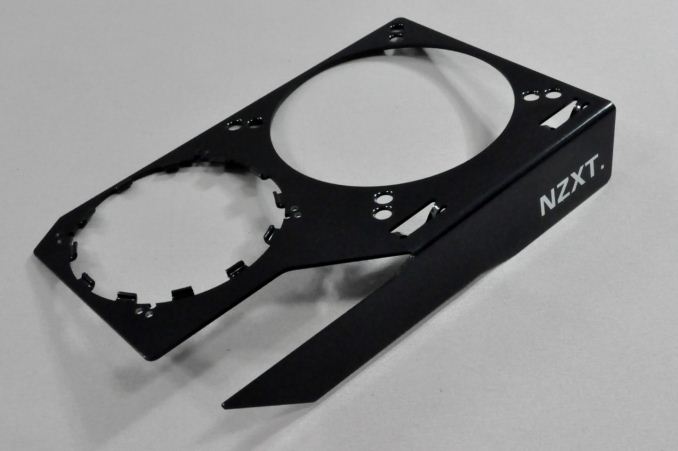
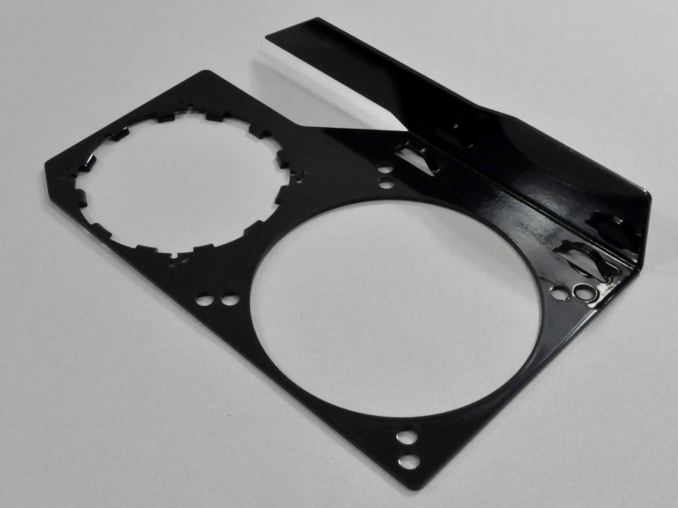
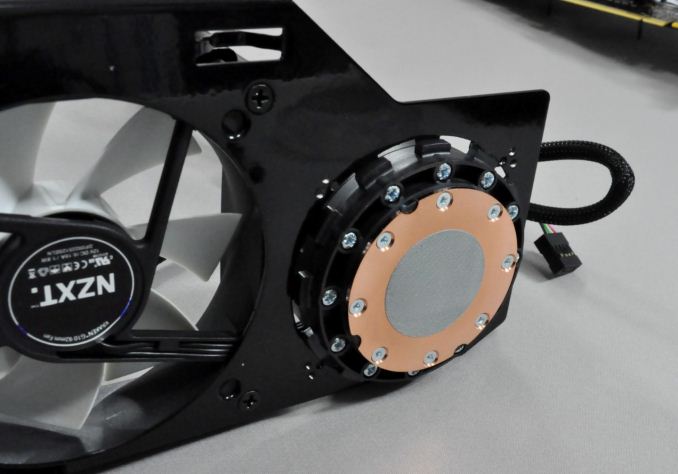
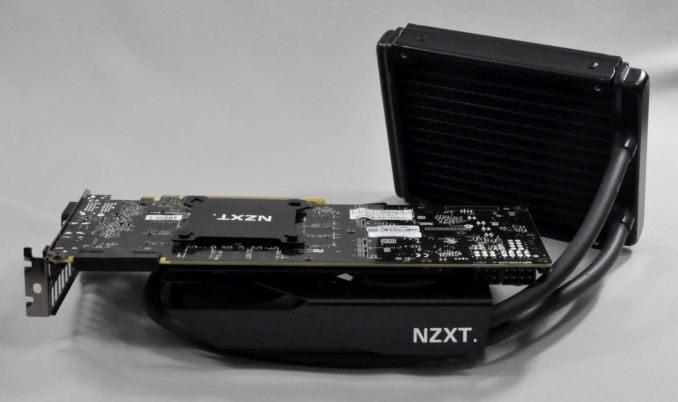
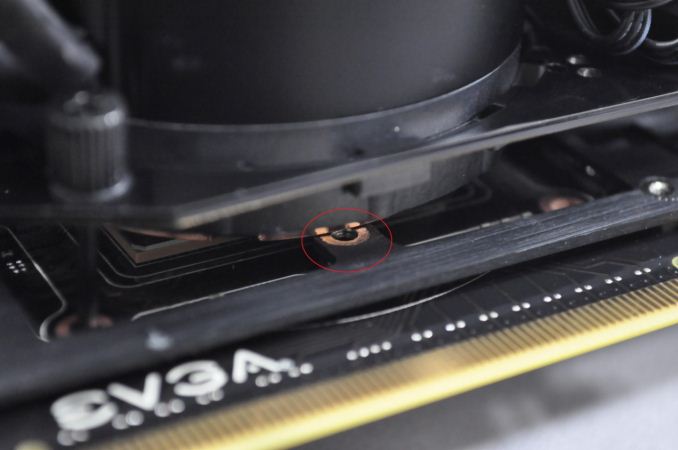








61 Comments
View All Comments
JarredWalton - Tuesday, March 11, 2014 - link
Well, it's factually correct to say the temperature dropped 35C which is 44% lower, but since temperatures aren't a 0-based scale it messes things up and obscures a whole lot of relevant information. It's scientifically the incorrect way of discussing things, which is what I was trying to say with the "technically correct" bit. Hahaha....mfenn - Tuesday, March 11, 2014 - link
Small nitpick: liquid cooling is an adjective followed by a noun, not a hyphenated compound word.errorr - Tuesday, March 11, 2014 - link
Really? Who made you lord high pedant?Hate to break your bubble but a compound noun is exactly what 'liquid cooling' is. Compound nouns can be combined, hyphenated, or separate words. Perhaps you could look up the definition of compound noun when you have a chance.
Hyphenation is a stylistic choice to enhance ease of reading. There are no universal orthographic rules per se that prohibit a hyphen there. Orthagraphy is a collection of conventions and not rules. Style rules are required to clarify common ambiguities but unless they actually increase confusion they are mostly harmless and at worst unnecessary.
I will concede that over the last couple of decades hyphenation has been in serious decline as the internet has come to dominate informal written communication. I remeber the OED took out over 16,000 hyphenations in one of the short versions of the dictionary. That doesn't suddenly make them wrong. I doubt AT has its own style-guide so I can't determine where your authoritative declaration comes from.
JarredWalton - Tuesday, March 11, 2014 - link
Sadly, the style guide on some things with AnandTech simply comes from Jarred, who is old and happens to like hyphens, dashes, and parentheses (among other outdated writing conventions). As you say, style is often very fluid, and mostly I just wanted to make sure all our instances of air/liquid-cooling" were consistent in the article. Which is not to say that another article might not use "liquid cooling". I do have to say that I am constantly amazed at the things people choose to complain about. Welcome to the Internet! :-)SpartyOn - Tuesday, March 11, 2014 - link
This article is pretty shortsighted as there have been custom LCS brackets available from Dwoods and others for at least two years, if not more. I applaud NZXT for taking this more mainstream, but that price is absolutely ridiculous for what you're getting. I would think the enthusiast marketplace is still the place to turn for these types of mods.I've had a Dwoods bracket on my GTX 770 4GB for the past 8 months running a Zalman LQ320 and a PWM Zalman 92mm fan. I've got another LQ320 in my machine for the CPU and it's all in a CM 120 mini-ITX box (I cut out the HDD cage) so space and thermals are at a premium. My temps are 23C at idle, 42-48C in gaming benchmarks, and 50-52C in FurMark torture @ 1350MHz core and 2000MHz memory. I do have an Antec SpotCool blowing on the back of the PCB since there are some RAM chips on the back.
I think it's a little incredulous to say that there is no easy way to control the fans. As others have noted, SpeedFan is an option or you could do what I did and install PWM fans for both the VRM bracket and the radiator and use a powered PWM splitter from the mobo header. This works really well in a mini-ITX situation like mine as it keeps everything nice and quiet for HTPC use, but ramps up the speeds as needed when I start gaming. I'm sure I could get better fan curves if I did it manually, but for a ready-made hands-off approach, this works really well and cools just fine - even the VRM fan.
DukeN - Tuesday, March 11, 2014 - link
Thank you for posting the review, very timely as just last night I was looking at this and the Accelero Hybrid.Sorry to burst the bubble but this was sold out at NZXT before the Anandtech story posted, so no AT effect :(
This thing is basically not available anywhere ATM, so this could very well be d-wood 2.0
mwildtech - Tuesday, March 11, 2014 - link
These brackets on the right card can be pretty beast. The vrm temps are worrying, especially since you can't measure the vrm temps via software on Nvidia Kepler cards except for a select few high end card.rSubyman - Tuesday, March 11, 2014 - link
I like how they say there is a 40% reduction in temps by playing with the arbitrary Celsius scale. Looking at the proper Kelvin scale, we note:363K down to 323K = A mere 15% temperature reduction.
Obviously, I'm messing about, but throwing around dumb numbers is fun. I'm glad to see the author call them out on it :)
ExodusC - Tuesday, March 11, 2014 - link
So for $30 I could move over my Corsair H80 off my CPU and onto my exorbitantly hot GPU, then just throw one of my perfectly adequate air coolers onto my CPU?I have to say that's pretty appealing. Reference coolers on GPUs are extremely loud and inefficient when under heavy load, I'd love to quiet my system down.
EnzoFX - Tuesday, March 11, 2014 - link
While these units may be quieter than your average stock cooler. I would not consider them quiet by those truly seeking low audible levels. Pumps are inherently noisier than a quiet fan. I don't see this changing anytime soon.